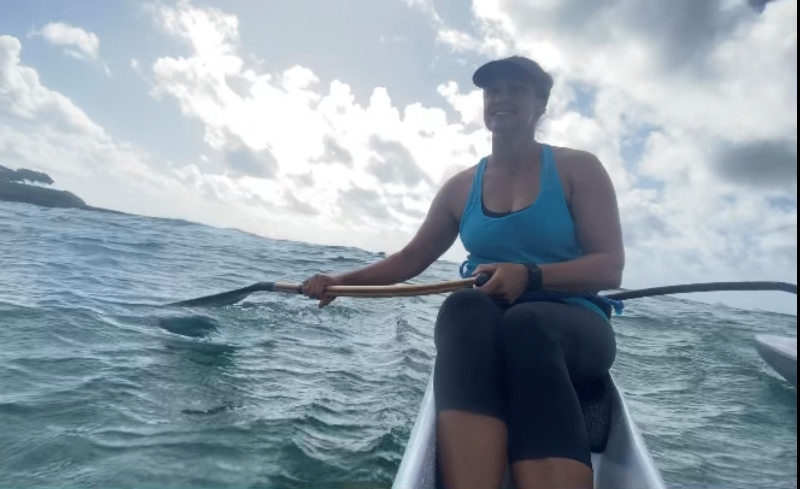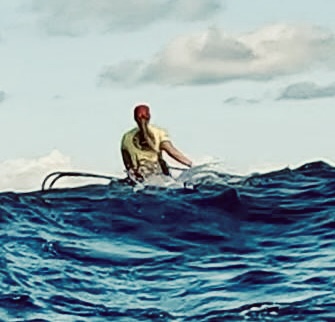In my first seven years paddling an OC-1, I had no idea how to stop myself from capsizing (“huli” in Hawaiian) aside from leaning left. I had never heard of a brace stroke or flying the ama. I didn’t know what it was or why I needed it.
I would paddle, leaning slightly left all the time, and then lean even more left in rough water, practically hugging my ama at times.
When leaning left didn’t work, I would huli.
I huli-ed while paddling in flat water, upwind, downwind, side wind, and no wind. There were even random hulis while just sitting and waiting for people. I huli-ed while paddling on the left and right side.
I huli-ed in practice, I huli-ed in races. I huli-ed seven times in my first States race and 30 seconds into my first Molokai solo.
I lost sunglasses, hats, cameras, phones, food, a heart rate monitor, and I even nearly lost my canoe once.
Leaning left all the time threw my pelvis out of alignment.
I developed sacroiliac joint pain, a hamstring strain, and a hip injury. I got a shoulder impingement in my left shoulder because my scapula was under-functioning as a result of leaning left while paddling right.
Eventually, I figured out that I needed to not only learn the brace stroke to stop myself from flipping over but also to stop leaning left, and to learn to sit centered in the OC-1 instead.
Here are three main issues with leaning left instead of sitting centered and using a brace stroke:
-
- When you lean left all the time, you take away the option of leaning left when you actually need it.
-
- When you are leaning left, you can’t put pressure on the brace stroke, which is the stroke that will stop you from a huli.
-
- Leaning left all the time while paddling can screw up your back, hip, or shoulder.
Sitting centered gives you two choices when you need to stabilize: brace or lean left.
-
- A solid brace stroke is a safety skill and the key to keeping you from huli-ing.
-
- Leaning left is also a safety skill, which is available when you sit centered while paddling and are not stuck leaning left all the time.
You probably have your own story about how you lean left to compensate for the instability you feel while paddling in your OC1 and the effects it has on you.
You are not alone!
Just like me, most people are never taught why they need to learn the brace stroke as an essential safety skill for paddling.
Here are two common questions I get about learning to brace:
“If I’m not paddling in the ocean, do I still need this skill?”
-
- Yes! Learning to brace will make you more confident paddling on the right side, which will allow you to paddle with good alignment, powerfully on the right side.
“I don’t want to fly my ama down a wave. Why should I practice this?”
-
- We learn to brace to stop from flipping over. A fun way to learn that skill is to practice while catching a wave.You don’t have to fly your ama down a wave, but you do need to learn to fly your ama to learn to brace.
I am pleased to share that these days I only huli occasionally, and my injuries are gone.
I’ve learned a lot about how to teach this skill and understand much more about why it’s so important.
Learning to fly your ama is actually about learning how to brace so you can stop yourself from huli-ing, which is an essential skill for your safety and longevity in the sport of OC-1 paddling.
Learn the brace stroke in five steps here.


